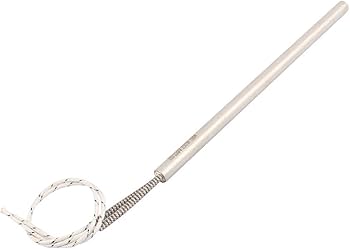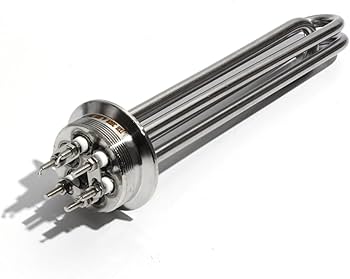In industrial heating applications, efficiency, reliability, and precision are crucial. Two heating solutions that have gained prominence in a variety of industries are the threaded cartridge heater and the flange tubular heater. Both of these heaters offer unique advantages and are widely used in processes requiring controlled heat distribution. This blog will explore the key features, benefits, and applications of these heaters to help you choose the right one for your needs.
What Is a Threaded Cartridge Heater?
A threaded cartridge heater is a compact, cylindrical heating device designed for direct insertion into drilled holes. The heater is typically threaded for easy installation and secure fitment. It offers localized, high-temperature heating and is commonly used in applications where precision is essential.
Key Features of Threaded Cartridge Heaters:
- High Heat Density: These heaters are capable of producing high temperatures in a confined area, making them ideal for heating small parts and tools.
- Fast Response Time: Due to their compact design, cartridge heaters quickly heat up and cool down, offering great control over the heating process.
- Customizable Design: Many manufacturers offer custom cartridge heaters to match specific industrial requirements, such as different lengths, watt densities, and voltage options.
- Durability: Threaded cartridge heaters are built to withstand high temperatures and harsh environments, ensuring a long operational life.
Applications: Threaded cartridge heaters are widely used in industries such as:
- Injection molding: To heat molds for consistent product quality.
- Packaging machinery: To seal materials with precise, controlled heat.
- Medical devices: To heat surgical tools and other equipment that require sterilization.

What Is a Flange Tubular Heater?
A flange tubular heater, on the other hand, is a versatile heating element designed for industrial tanks, containers, and ducts. These heaters feature tubular elements that are typically mounted onto a flange for easy installation into pipes or tanks.
Key Features of Flange Tubular Heaters:
- Versatility: Flange tubular heaters are capable of heating both liquids and gases, making them a flexible option for a wide range of industrial applications.
- Uniform Heat Distribution: These heaters provide even heat across large surface areas, ensuring consistent temperature control.
- Custom Configurations: Flange tubular heaters can be customized with different materials (such as stainless steel or Incoloy) and can be bent into various shapes to fit the application’s needs.
- Energy Efficiency: With their ability to directly heat substances, flange tubular heaters minimize energy loss, making them an energy-efficient solution.
Applications: Flange tubular heaters are commonly used in:
- Water and oil heating: For boilers, storage tanks, and industrial processing.
- Chemical processing: To maintain the temperature of chemical solutions.
- HVAC systems: For heating air in ducts and ventilation systems.
Benefits of Using
Both threaded cartridge and flange tubular heaters offer a wide array of benefits for industrial applications. Here are some of the primary advantages:
- Precise Temperature Control: Both heaters allow for fine-tuned control of temperatures, which is essential in industries where even small deviations can impact product quality or process efficiency.
- Durability and Reliability: These heaters are designed for demanding industrial environments and can withstand high temperatures and continuous operation without degradation.
- Cost Efficiency: While initial installation might involve some investment, their long-term performance and energy efficiency translate into cost savings over time.
- Compact and Space-Saving: Threaded cartridge heaters are small enough to be inserted into tight spaces, while flange tubular heaters, though larger, are designed for easy installation in large systems.
Choosing the Right Heater for Your Industrial Needs
When selecting between a threaded cartridge heater and a flange tubular heater, it’s important to consider the specific requirements of your application. Ask yourself:
- Do you need localized heating or large-area heat distribution?
- Are you heating solids, liquids, or gases?
- How important is response time and temperature precision for your process?
- What are the temperature ranges you need to achieve?
For applications requiring high-precision, concentrated heating, a threaded cartridge heater may be the best choice. Its fast response time and ability to reach high temperatures make it ideal for tasks like plastic molding or tool heating. On the other hand, if you need to heat larger systems such as tanks or pipes with even heat distribution, a flange tubular heater will likely meet your needs.
Final Thoughts
Both threaded cartridge and flange tubular heaters provide robust solutions for industrial heating needs, offering efficiency, precision, and durability. By understanding the specific requirements of your heating application, you can make an informed decision that will improve operational efficiency and ensure consistent results.



